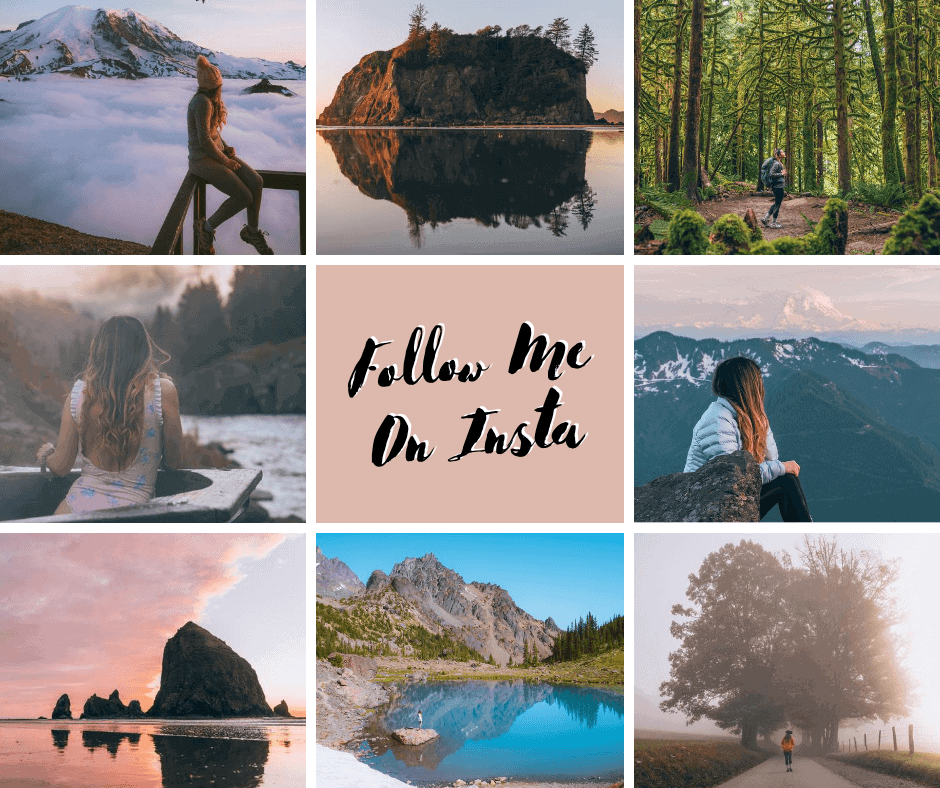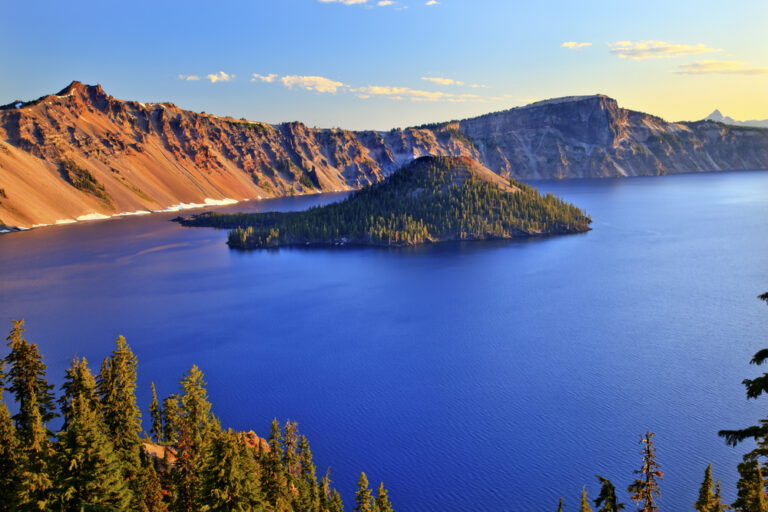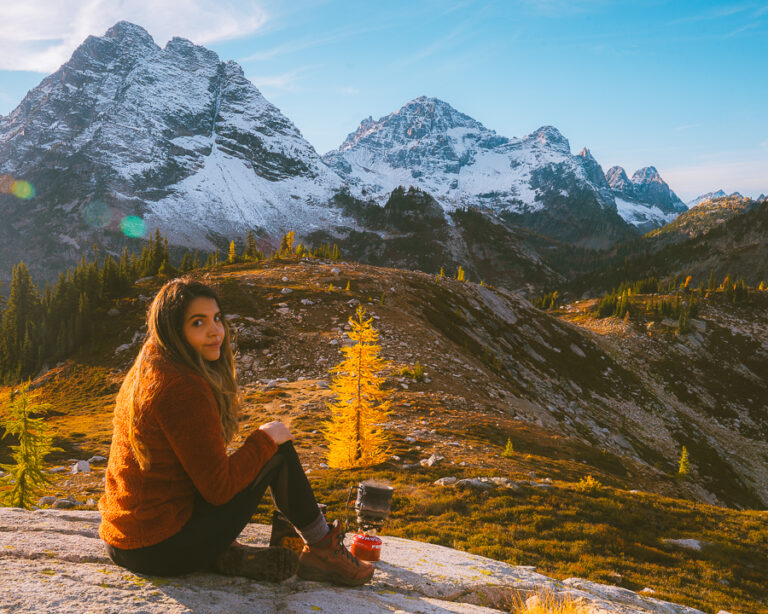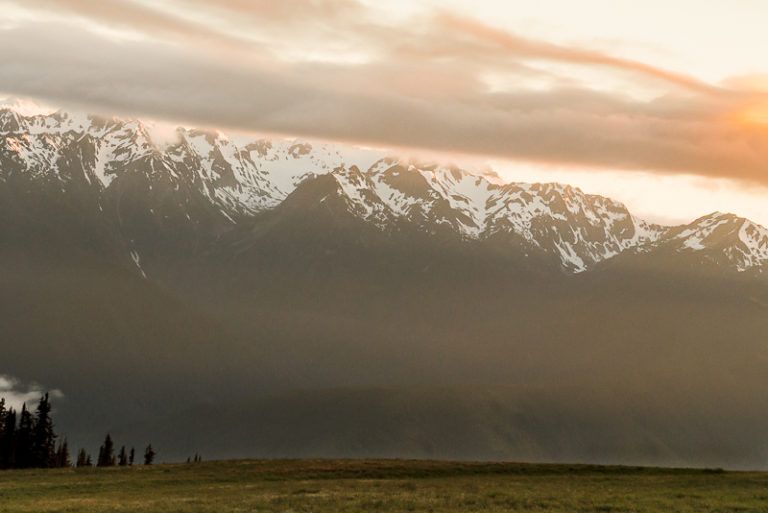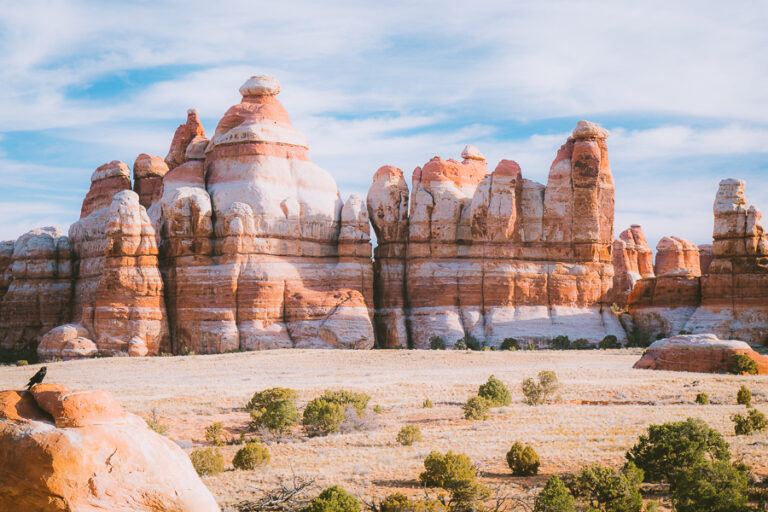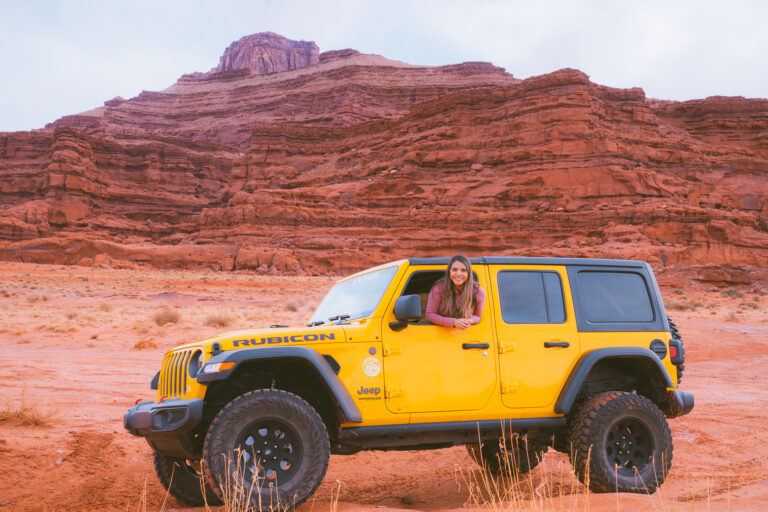Best National Parks To Visit In Winter
I love visiting national parks in the winter. There is nothing that can compare to the beautiful and serene mountains, filled with fresh powdered snow. I remember my first time visiting Yosemite National Park in the winter, and thinking how much it looked like a magical town in a snow globe. Ever since then, I have been obsessed with seeing national parks in the winter. The crowds have dwindled, and the beauty remains, but sometimes with fresh snow to cover the landscape. Below I talk about the Best National Parks to visit in the Winter, including snow terrains and some pretty warm destinations. I know not everyone is a fan of snow! Enjoy!
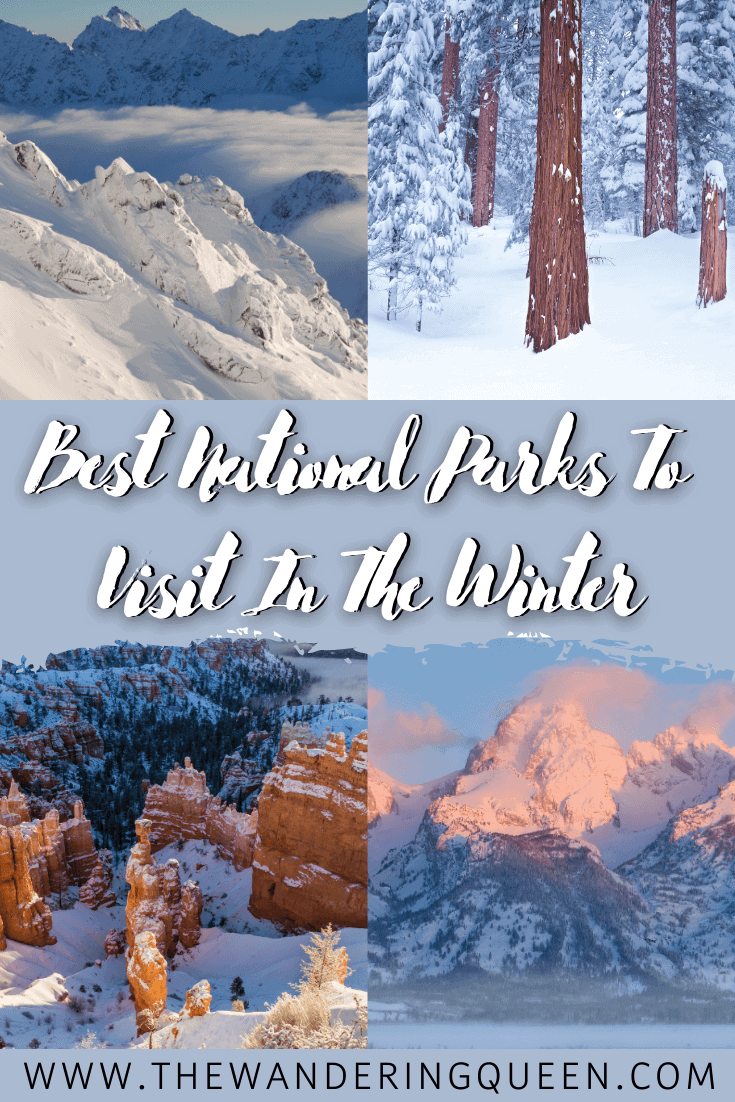
Disclosure: This post contains affiliate links. If you click one of them, I may receive a small commission (for which I am very grateful for) at no extra cost to you.
Download my free Outdoor Photography Guide
What To Pack For The National Parks In Winter
- Base Layers: This is the first layer I put on. Smartwool makes great quality base layers. >Check Out The Bottoms Here >Check Out The Tops Here
- Sweat Wicking Shirt: Cotton shirts soak up your sweat when hiking, so make sure to wear something breathable. >Check out this awesome breathable shirt here.
- Mid Layer: A nice sweater is great to have in the winter. The key to winter in National Parks is layering. >Check Out My Fav Sweater Here
- Insulating Jacket: Arcteryx makes some of the warmest and comfiest jackets in the market! >Check Out My Fav Winter Jacket Here
- Outer Shell: Always bring an outer layer in the winter. You never know if it will snow or rain. >Check Out My Rain Jacket Here
- Wool Socks: Having the correct socks helps prevent getting blisters. Smart Wool is probably my favorite brand out there. >Buy Hiking Socks
- Winter Hiking Boots: Winter hiking boots usually have a better grip than regular hiking boots and are insulated. >Check these out here
- Hiking Gloves: >Buy Some Gloves Here
- Winter Hat: You lose a lot of your body heat from your head so wear a warm hat! >But This One Here
- Buff: This helps keep your face nice and warm 🙂 >Buy A Buff Here
- Sunglasses: It can get pretty sunny even in the winter! Make sure to bring these >Check Them Out Here
- Gaiters: This helps prevent snow from getting inside your shoes. >Check Them Out Here
- Crampons/Microspikes: If there is a chance of trails with ice, it is a good idea to bring this. It will make your life so much easier. >Buy Some Here
- Sports Bra: For women. >Check This One Here
- Trekking Poles: These help keep your balance! Especially because the ground is so slippery in the Winter. >Check Them Out Here
- Winter Hiking Pants: My favorite hiking pants are these leggings that have a warm fleece lining. If it is super cold I make sure to pair them with base layers. >Check Out These Warm Leggings Here!
- Knife: I always carry a knife in my backpack just in case. >Check Out My Knife Here
- Water Bottle: Winter is the only time I hesitate to bring a hydration reservoir as the water might freeze. >Check Out My Fav Water Bottle Here
- Backpack: To carry all your gear, water, and food, you need a good backpack. Osprey is known to have some of the best backpacks in the market. >Buy This Great Quality Backpack
Claim your FREE Hiking Checklist
Ready to start hiking? Grab my free hiking checklist and never forget anything at home!
For more in-depth information on winter hiking gear: Winter Hiking Essentials Here
Best National Parks To Visit In Winter
Death Valley National Park

Death Valley National Park in Southern California is the perfect winter national park destination. The hottest, driest place in the country is too hot to visit much of the year, but its beautiful landscapes are definitely worth exploring in the winter!
With daytime temperatures in the high 60s and low 70s, you can actually wander around outside at Death Valley National Park in the winter. Walk the salt flats at Badwater Basin, and play on the Mesquite Flat Sand Dunes!
Winter is a great time to hike in Death Valley, especially if you want to attempt a moderate or difficult trail of some length. But even then, you may want to hike in the mornings and late afternoons and carry lots of drinking water and sun protection.
Try the Mosaic Canyon hike, a 4-mile round trip through a beautiful canyon with honed marble walls and natural mosaic outcroppings. Or the Golden Canyon hike through the badlands of Zabriskie Point.
Winter sunrises and sunsets in the desert can be really colorful, so head to Dante’s View or Zabriskie Point to take photos and marvel at the spectacular views. And at night, wear something warm and do some stargazing: Death Valley hosts a Dark Sky event in February each year.
By Dhara from Roadtripping California
Yellowstone National Park

Think Yellowstone is all about summer activities such as hiking? Come here in winter, and you will discover a plethora of amazing activities and a whole different atmosphere that so many people never get to experience!
From November through March, Yellowstone’s temperatures drop, and crowds dissipate as the area gets blanketed by the thick layer of snow. Many roads in Yellowstone are closed during winter, which means visitors have to use ski, snowmobiles, and crampons to get around.
And while Yellowstone in winter might be frigid and snowy, it offers a drastically different experience from summer; it’s totally worth a visit.
The number of visitors in Yellowstone during winter is relatively low, a far cry from millions of people who come here from all over the world during summer.
In winter, you can spot many animals roaming around the park as roads are clear from traffic. Wolves, bison, and deer all call this place home, and if you get lucky after touring the incredible geothermal features of Yellowstone, you can spot one of these majestic creatures!
The Yellowstone Association offers many animal-watching day trips led by naturalists for visitors who want to see elk, deer, bison, and wolves.
Also, the park’s main features, such as Old Faithful or Grand Prismatic Spring, are practically free of people, so you don’t have to get up at 7 a.m. to enjoy these places.
And during the night you can enjoy the starry skies free of light pollution. Come to Yellowstone in winter, and you will leave with incredible memories that will stay with you forever!
By Daria at The Discovery Nut
Crater Lake National Park

Crater Lake National Park in Oregon is breathtaking year-round. It is home to the USA’s deepest lake, created over 7000 years ago from volcanic activity. The impossibly blue lake is fed entirely by rain and snow, making it one of the world’s purest lakes.
Despite Oregon holding a treasure trove of natural beauty, Crater Lake is the only national park within the state. However, anyone who has ever admired Wizard Island from the rim of the lake will appreciate how well-deserved this distinction is.
This already spectacular landscape becomes even more magical during the winter months as a blanket of snow descends on it. With an average snowfall of 43ft per year, Crater Lake is one of the USA’s snowiest places, making it one of the best national parks to visit in winter. The stark contrast of the pure white snow against the lake’s deep blue color makes for a truly remarkable sight, and this snow often lasts into May.
The National Park is one of the best places to visit in Oregon for winter activities. Throughout the winter, ranger-led guided snowshoeing hikes are offered free of charge! This unique experience takes 2 hours, and snowshoes are provided.
However, advanced booking is required. It is also a popular location for sledding, snowmobiling, cross-country skiing, downhill skiing, and snowboarding. There are restrictions on where these activities can take within the park, so it’s worth checking the NPS website for the most up to date information.
By Sophie and Adam at We Dream Of Travel
Everglades National Park

If you are looking for a warm winter destination, Florida will be the perfect place for you! There are many outdoor activities you can do in the Sunshine State, and one of the most popular ones is to visit the Everglades National Park.
Located in South Florida, the Everglades is one of the most unique ecosystems in the world. The wildlife is incredible, and it’s the only place where you can find both alligators and crocodiles. The wetlands are made of both fresh and seawater, which is why these 2 species can cohabitate.
Winter is the best time of the year to visit the Everglades (and Florida in general). It’s warm (but not too hot), and more importantly, it’s dry! This is ideal to go walking, and there are many walking trails in the Everglades. The best ones are the Shark Valley observation tower and the Anhinga Trail.
If you have a bit of time ahead of you, make sure to go on a ranger-led activity. This can either be a walking or biking tour. You will be with one of the park rangers who will tell you everything you need to know about this wonderful national park. It’s fascinating!
Another popular activity is to go on an airspeed boat ride. It lasts about 30 minutes, during which you will explore the wetlands. You will see the beautiful mangroves and plenty of alligators!
By Pauline Vergnet at Beeloved City
Yosemite National Park

Snow in California? It’s less bizarre than it seems! If you’re keen to see some snow in the Golden State, there are plenty of great winter destinations in California, but one of the best places for snowy landscapes is Yosemite National Park. It’s the most famous national park in California for a good reason!
Winter in Yosemite is usually lovely: you’ll enjoy high temperatures averaging around 48° F, but you’ll also have overnight lows of 28° with an average of 8 days of snowfall per month in the winter. So you’ll get sunny, crisp days and the chance of fresh snow falling overnight!
There are far fewer crowds, so you will have the feeling that you have the park to yourself at times. However, do note that some of the best sights in Yosemite will be closed: for example, Tioga Road is closed, and you can’t access the beautiful Glacier Point, one of the best viewpoints in Yosemite.
You can still hike several of the trails, including Cook’s Meadows and Lower Yosemite Falls, even in the winter as they are paved or on a boardwalk. Other great winter activities include ice skating at the Curry Village Ice Skating Rink, snow tubing, and sledding.
Snowshoeing is also a great option in Yosemite in winter. You can go out on your own on one of the snowshoeing trails or join a guided snowshoe hike. The Clark Range View Trail is a two-mile snowshoe and cross country trail that’s beloved by locals. You can also try snowshoeing near Badger Pass, which has great views.
By Allison Green of California Crossroads
Joshua Tree National Park

Joshua Tree National Park is the perfect national park for those looking to escape cold, wintry weather! The national park is famous for its namesake Joshua Trees. These prickly trees are cousins of the agave and can live for over 150 years!
But Joshua Tree National Park is so much more than the trees! You’ll also find lava-formed boulders, unique cholla cacti, impressive hikes, and photogenic sunrises.
The absolute best time to see Joshua Tree National Park’s beauty is at sunrise and sunset. Sunrise at the Cholla Cactus Garden is hands-down the best spot in Joshua Tree. As the sun creeps over the horizon, the cactus garden glows in the morning sun.
End your day at Keys View for a colorful sunset. As the sun fades, purples and pinks illuminate the valley below, providing grand views of Palm Springs and the Coachella Valley.
Exploring the Joshua Trees and boulders is an essential part of any trip to Joshua Tree National Park. Scramble the boulders at Arch Rock and Skull Rock. Photograph the park’s famous Joshua Trees from Park Boulevard or the secluded Geology Tour Road.
Joshua Tree National Park is also a pleasant Winter hiking destination thanks to warm temperatures. Some of the most popular trails include Hidden Valley for desert landscapes and Ryan Mountain for impressive views. Barker Dam is also a great hike for sunrise!
In the Winter, day time temperatures stay around 60 degrees, perfect for hiking. Winter is also a popular time to camp in Joshua Tree, but bundle up at night as temperatures still get chilly!
By Julia Jennings at Well Planned Journey
Mount Rainier National Park
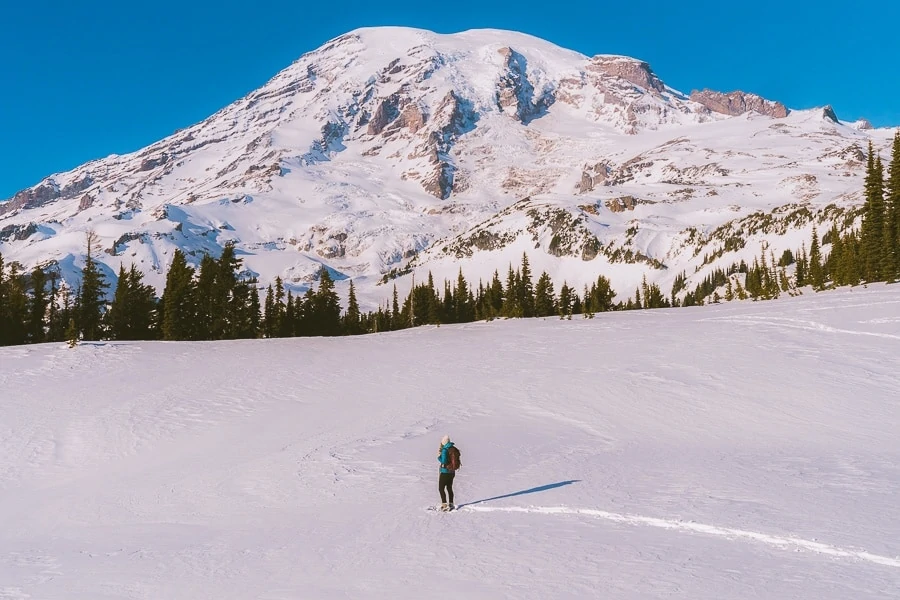
Named after the highest mountain in the Pacific Northwest, Mount Rainier National Park in southern Washington is one of America’s most scenic parks. The 14,411-foot peak of Mount Rainier has snow year-round, but it’s especially impressive during the winter when the whole park is blanketed in white, and its many glaciers really stand out. Rainier truly is a winter wonderland!
Because of the park’s high elevation, most roads are closed in the winter due to snow cover. However, the main road to Jackson Visitor Center is plowed daily, so it’s possible to explore the Paradise and Longmire sections of the park.
Activities in Mount Rainier National Park in the winter include hiking, viewing Narada Falls, which are frozen during winter, and stopping by the historic Longmire Museum and nearby Trail of the Shadows. When enough snow has accumulated (usually January through March), the park even opens a “snow play” area near Paradise for sledding and tubing!
The numerous hiking trails near Paradise are ideal for winter snowshoeing, as they offer gorgeous views of the peak and several glaciers. On winter weekends, guests can rent snowshoes at the Paradise Visitor Center and join ranger-led snowshoe hikes of the Nisqually Vista Trail.
Be prepared for unpredictable weather, and be sure to bring tire chains – they’re required for all vehicles entering the park between November 1 and May 1.
By Scott Shetler at Quirky Travel Guy
Grab Your Free Car Camping Checklist! 🚗🌲
Ready to elevate your car camping game? Snag our essential checklist to ensure you’ve got everything you need for a stress-free, fun-filled adventure! Perfect for beginners and seasoned campers alike. Download now and hit the road prepared! 🌟🎒
Rocky Mountain National Park

Rocky Mountain National Park is a perfect trip for winter lovers, and the entire park transforms into a winter wonderland. Make sure to dress appropriately for your winter adventures. Leave the tennis shoes at home and opt-in for insulated winter boots that will keep your feet warm and dry. If you’re going hiking, wear microspikes or snowshoes to add some traction to every step. It will help keep you from slipping around on ice or slippery snow. Or if you don’t want to hike or snowshoe, you can go backcountry or cross country skiing.
Part of the park is closed during the winter months, but there are still many hikes to do. One of the prettiest winter hikes is to Nymph, Dream, and Emerald Lake. The trail is 3.8 miles round trip. It starts from Bear Lake and continues to the first lake, Nymph Lake. From there, keep going to Dream Lake, and it opens up views of the peaks above and the frozen lake. If it’s not too windy, you can continue to Emerald Lake, which is also worth the views.
You can also hike to Lake Haiyaha, which is 4.4 miles round trip, or the 2 miles round trip to Alberta Falls and see them frozen over. Both trails also start from Bear Lake.
Even in the winter months, you might see wildlife activity in the park. Elk and bighorn sheep are common. Make sure to keep a safe distance from wildlife!
By Jenny Kotlyar at Campsite Vibes
Great Sand Dunes National Park

Great Sand Dunes National Park is one of the only national parks in the world where you can engage in winter-like activities during all seasons, as visitors can participate in sandboarding and sand sledding. But visiting during the winter months creates a unique experience at the park.
When the weather turns cold and snow begins to fall on Great Sand Dunes National Park, which is home to North America’s tallest dunes, fresh powder dusts the dunes, and the park transforms from a hiker’s paradise to a winter sports wonderland.
Visitors can bring their own snowboards, skis, and snowshoes and carve down the pristine powder at their own pace, looking into a valley separated by the towering Sangre de Cristo Mountains. The park features 30 square miles of sand dunes that become a haven for snowboarders, skiers, and snowshoers nearly every December to February.
Since there aren’t any designated trails and there aren’t any lifts to take you to the top, snowshoeing to the top is your best bet to get there quickly. From there, you can take your pick of which side of the dunes to go down and carve a path that zigzags over the newly snow-covered dunes.
Those with four-wheel-drive vehicles can experience a different side of the 19.9-mile Medano Pass Primitive Road, which runs alongside the dunes for miles until it snakes directly up to them.
By Jarrod Heil at Ramble Around The World
Glacier National Park

Glacier National Park is a hugely popular place in the summer, but after the snow falls and the main road across the park closes, it gains a crowd-free winter wonderland ambiance that is magical to experience. For those who don’t mind the rugged cold, you’ll find peace and quiet in the snow-blanketed terrain.
Cross-country ski trails zig-zag around Glacier National Park in the winter; a popular one to do is the Avalanche Lake Trailhead, located along the Going-to-the-Sun Road, a famous drive that is mostly closed to cars in the winter months.
If you’re an experienced winter backpacker or cross-country skier, you can continue up the road to stunningly beautiful Logan Pass and even find a backcountry spot to camp for the night if that’s your thing — permits are free in the wintertime. Another great way to explore Glacier National Park in the winter is via snowshoes. Most Saturdays in the winter, you can even join a snowshoe guided hike led by a park ranger that leaves from the Apgar Visitor Center.
The visitor center also has snowshoes available to rent. Besides the Apgar Visitor Center and a couple of campgrounds, everything in Glacier National Park is closed in the winter, but this adds to the special winter setting that makes you feel like you’re truly out in, and surrounded by, nature.
By Gina Tarnacki at Travel Montana Now
Sequoia National Park

The naturally diverse and serene environment of Sequoia National Park makes it perfect for everyone. It doesn’t matter if you’re going solo, visiting with a group, or traveling with a pet. This glorious world of ancient trees, rocks, and rivers will leave you wanting more!
The park is in the southern part of Sierra Nevada by the Kings Canyon National Park. As a result, the National Park Service handles both parks as a unit.
In the winter, this natural wonderland takes the form of an enchanted world right out of a fantasy novel. The fresh snow presents chances for new activities, and the best part is that few visitors come in winter, this means you can have the place to yourself.
While the large size of the park leaves so much to see and do, snowshoeing should be the first thing on your list as it is a great way to explore the land of colossal trees. To rent a snowshoe, you can check Grant Grove village of the lodgepole campground.
Other exciting activities include cross country skiing and sledding across Wolverton Meadow. You can also visit General Sherman, the largest tree in the world at over two thousand years old, and right after that is the General Grant Tree, which is the second-largest tree in the world. The third is the president, a tree of 3200 years that sits close to the senate (a towering cluster of redwoods).
Sequoia National Park is like a different world where you can feel safe from the noise and chaos of the world. It is a perfect place to visit in the winter.
By Ossama Alnuwaiser at Awesome Traveler
Grand Canyon National Park

The Grand Canyon in Arizona is one of the most beautiful places in the world. Because of that, in peak season, the crowds can be atrocious. The perfect answer to the problem is to visit this beautifully colored gash in the earth’s surface covered in a beautiful layer of white snow.
In the winter, only the southern rim of the Grand Canyon is easily accessible as the north rim roads aren’t serviced regularly.
Hiking in the Grand Canyon can be extreme at any time of the year, especially in the winter. The rim is at 8,000 feet, so it gets a lot of snow, and winds can be a problem. If you do hike, be sure to prepare with adequate equipment, clothing, food, and water. You can snowshoe at Shoshone Point, Grandview Lookout Trail, or through Grand Canyon Village.
The sight of sunrise and sunset over the canyon is breathtaking at any time of the year, but especially in the winter. It will be a highlight of your traveling life.
By Jamie Italiane-DeCubellis at The Daily Adventures Of Me
Bryce Canyon National Park

With its characteristic hoodoos, beautiful snow, and distinct lack of crowds, there’s no doubt that there’s something special about visiting Utah’s Bryce Canyon National Park in the winter.
While Bryce Canyon may be a desert environment, it’s no stranger to snowfall (park elevations top out around 9100 feet), and the combination of the orange hoodoos and the bright white snowfall is positively stunning.
While some parts of the park, such as Rim Trail from Bryce Point to Inspiration Point and the popular Wall Street slot canyon, are closed over winter, many of the best things to do in Bryce Canyon NP can still be experienced during the colder months of the year.
Some of the most popular trails in the park, such as the Queen’s Garden Trail and Navajo Loop trail, are kept open year-round, weather permitting.
The four most popular viewpoints of Bryce Canyon (Sunrise Point, Sunset Point, Bryce Point, and Inspiration Point) are kept accessible throughout the year. The roads to them are kept plowed (of course, check for possible interruptions if there has been a recent snowstorm!).
For travelers looking to strap on some snowshoes, Paria Road and Fairyland Road provide excellent opportunities to explore the park in the snow.
By Kate Storm At Our Escape Clause
Read More: The Ultimate Bryce Canyon Winter Guide
Grand Teton National Park

Grand Teton National Park in the winter is a magical experience that you can’t find anywhere else. Nothing beats seeing the majestic Tetons covered in 500+ inches of snow. While you may not be able to access many scenic roads in the park, there is still plenty to do to keep you busy.
Pack your own snowshoes or rent some in town and head out to Gros Ventre, Mosse-Wilson, Death Canyon, Jenny Lake, Two Ocean Lake, or Flagg Ranch to put them to use. If you want to move a little faster but still enjoy the views, try cross country skiing. No matter what you’re doing, keep an eye out for wildlife!
Another great thing to do in the Tetons in winter is a wildlife safari. You can either book an official one or DIY it if you’re on a budget and comfortable with winter driving conditions. You could see moose, bison, coyotes, bighorn sheep, deer, elk, and if you’re lucky, wolves. One benefit of joining a safari is having someone that really knows the area well. You can always join one then DIY it another day for even more wildlife viewing.
Finally, if you want some fun activities nearby but not in the park, consider snowmobiling (especially in Yellowstone), skiing or snowboarding, snow tubing at Snow King, a sleigh ride in the National Elk Refuge, and wandering through the shops and galleries in town. Whatever you decide to do, don’t forget to pack your toe warmers!
By Megan Johnson at Red Around The World
Dry Tortugas National Park

Dry Tortugas national park is one of the best national parks to visit during the winter for various reasons! It is one of Florida’s most unique national parks and one that people often skip, which is a shame because it is gorgeous.
Winter is one of the best times to visit dry Tortugas national Park because the weather is better, and Florida is out of hurricane season, so you will not have to deal with any natural disasters during your visit!
The winter in Florida is also out of the rainy season so the likelihood of a daily rain shower is much lower than it is other times of the year. Be sure to visit the historic 19th-century fort. Exploring the Fort during the winter is enjoyable because it isn’t so hot out so you can really focus on the history!
Make time to snorkel, and you may even see a sea turtle as well! The Dry Tortugas National Park in Florida is a gem to visit any time of year but especially during the winter!
By Victoria Yore At Florida Trippers
Final Thoughts On Best National Parks In Winter
Thanks for reading all about winter in the national parks! Make sure to check out some of my other favorite outdoor blog posts:
- Best National Parks in the Fall
- Best National Parks in the Summer
- Best National Parks in the Spring
- The Best Women’s Winter Hiking Boots
- What To Wear Snowshoeing
- The Ultimate Guide To Hiking In Snow

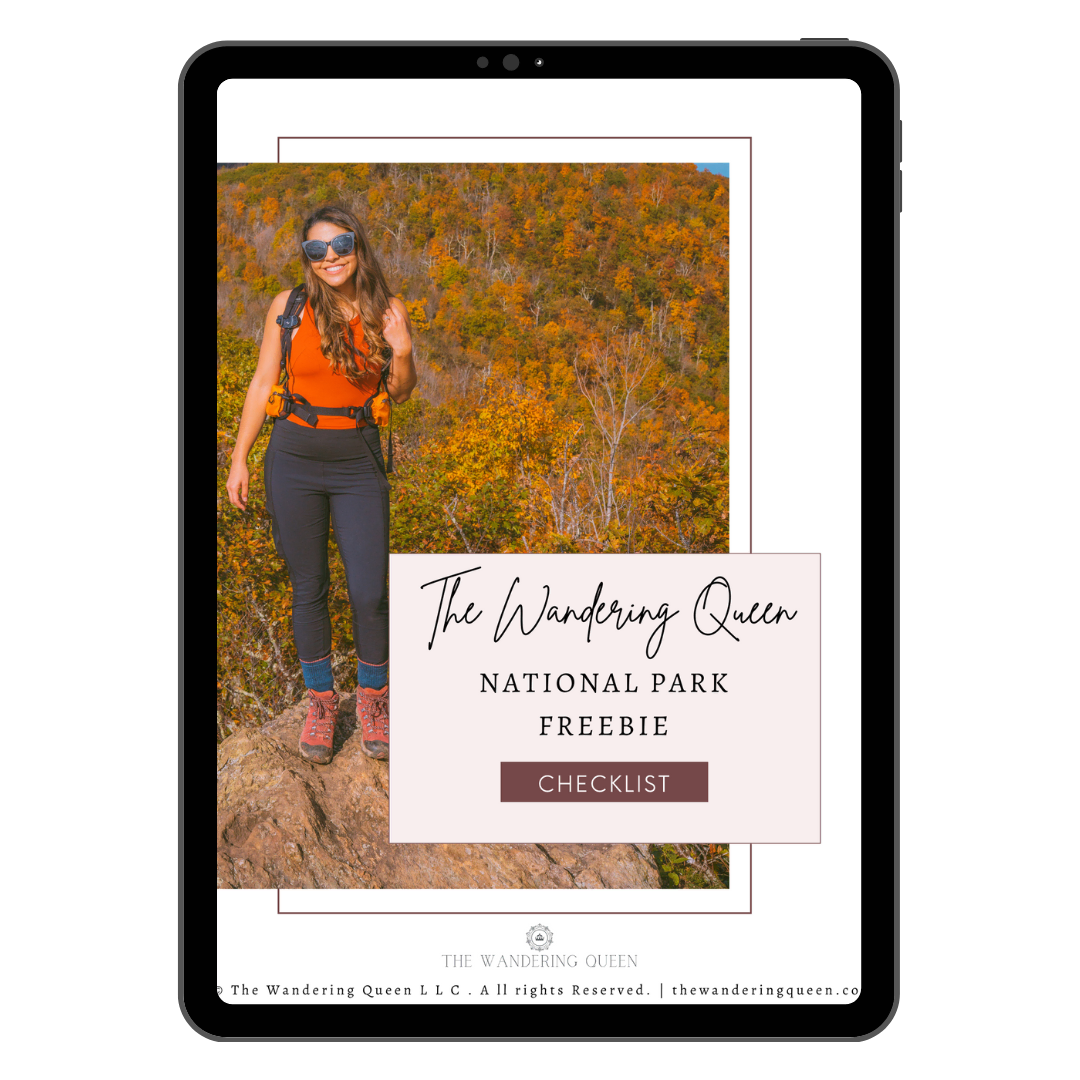
Get my free National Park Checklist
When you join the newsletter!
Pin For Later: Best Winter National Parks




